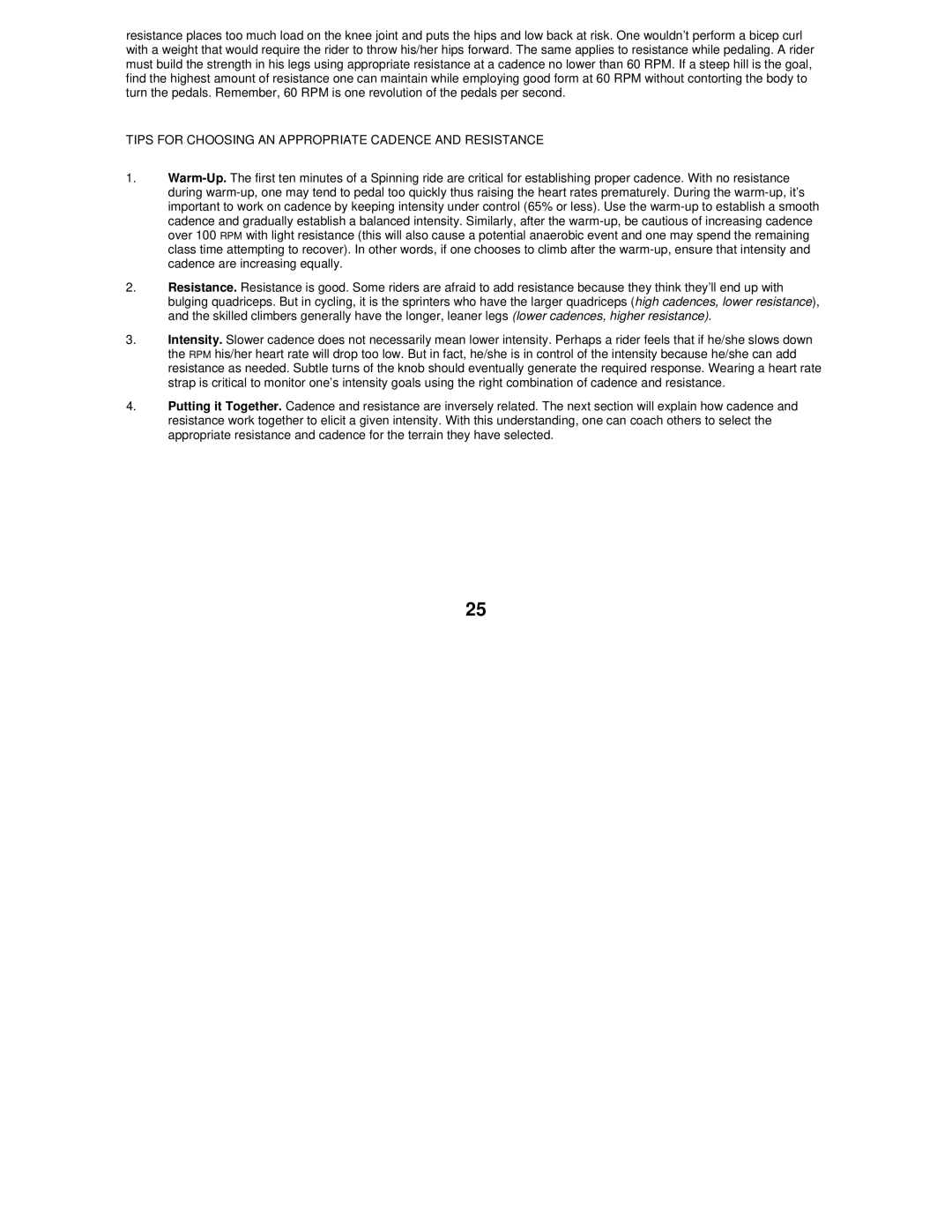resistance places too much load on the knee joint and puts the hips and low back at risk. One wouldn’t perform a bicep curl with a weight that would require the rider to throw his/her hips forward. The same applies to resistance while pedaling. A rider must build the strength in his legs using appropriate resistance at a cadence no lower than 60 RPM. If a steep hill is the goal, find the highest amount of resistance one can maintain while employing good form at 60 RPM without contorting the body to turn the pedals. Remember, 60 RPM is one revolution of the pedals per second.
TIPS FOR CHOOSING AN APPROPRIATE CADENCE AND RESISTANCE
1.
2.Resistance. Resistance is good. Some riders are afraid to add resistance because they think they’ll end up with bulging quadriceps. But in cycling, it is the sprinters who have the larger quadriceps (high cadences, lower resistance), and the skilled climbers generally have the longer, leaner legs (lower cadences, higher resistance).
3.Intensity. Slower cadence does not necessarily mean lower intensity. Perhaps a rider feels that if he/she slows down the RPM his/her heart rate will drop too low. But in fact, he/she is in control of the intensity because he/she can add resistance as needed. Subtle turns of the knob should eventually generate the required response. Wearing a heart rate strap is critical to monitor one’s intensity goals using the right combination of cadence and resistance.
4.Putting it Together. Cadence and resistance are inversely related. The next section will explain how cadence and resistance work together to elicit a given intensity. With this understanding, one can coach others to select the appropriate resistance and cadence for the terrain they have selected.
25
